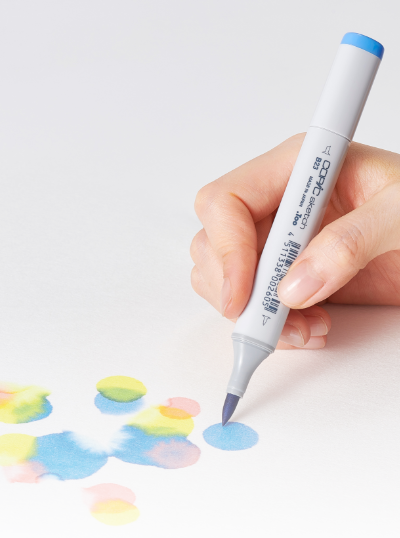The Color Wheel: Then and Now
15-01-2022
How was color perceived in our past
and how do we look at it now?
Until Sir Isaac Newton’s experiments with light and color began in 1666, it was long believed that colors were made by mixing a certain amount of light (white) and dark (black) together, with red being the most “light” and blue being the most “dark.”

Interpretation of Newton’s prism experiment. Photo credit: Apic/Getty Images, https://www.biography.com/news/how-isaac-newton-changed-our-world
To prove this theory wrong, Newton reflected white light into a glass prism and saw red, orange, yellow, green, blue, indigo, and violet reflect onto the wall. Today, these colors are known by the acronym ROY G BIV, better known as the colors of the visible spectrum. Below is a closer, detailed look at how this experiment was conducted and how color is indeed not created by mixing a certain amount of white and black together.

A closer look at Newton’s prism experiment, 1666. Photo credit: Encyclopaedia Britannica, Inc.
At the conclusion of this experiment, Newton recorded the colors that he saw into a circular map, and with that, the first comprehensive color wheel was created (below left image)!

Newton’s color wheel as seen in his 1704 book “Opticks.”

Johann Wolfgang von Goethe’s 1810 color wheel based on Newton’s findings. Photo credits: Wikimedia Commons (public domain)
About one hundred and fifty years later, some adjustments to Newton’s color wheel were made and Johann Wolfgang von Goethe’s version became the new standard in 1810 (above right). The color wheel continued to evolve as the Industrial Revolution swept through Europe, and by the early 1910’s, you could find a wide variety of color charts, wheels and spheres specifically designed for any job/industry you were in. The examples below were color charts designed specifically for advertising artists and fashion labels, both intended to help the businesses stay on trend. To this day, color forecasting is still extremely important in these industries!

ABOVE: Parson’s Spectrum of Color Chart, published in “The Principles of Advertising Arrangement” in 1912. Photo credits: https://imjustcreative.com/vintage-colour-wheels-charts-tables.

ABOVE: 1930’s color chart designed to make choosing clothing easier. Photo credit: https://glamourdaze.com/2017/05/1930s-fashion-the-art-of-color-in-dress.html.
The most common “universal” color wheel seen today is made by The Color Wheel Company. You can find their wheels at almost any art and/or crafting store! These color wheels have come a long way since Newton’s first design, and they not only show the primary (yellow, red, and blue), secondary (orange, green, and violet) and tertiary (yellow-orange, yellow-green, blue-green, blue-violet, red-violet, and red-orange) colors, but also what a color would look like if you added white to it (making a tint) and black to it (making a shade), for example, as seen below.

To make it easier to understand how this advanced color wheel (and all the color wheels shown before it) relates to Copic markers, we made an example of a basic color wheel labeled in Copic code! You can go to our line art gallery and print out this sheet at home on marker paper to practice and keep as a reference!

*We suggest coloring this wheel using a dark color in the smallest center circle, a mid-tone color for the middle circle, and a light or pale color on the outer/largest circle (where all the labels are).
In the next blog, we’ll be showing what this color wheel looks like filled in with Copic markers and how many marker colors are included under each color category!
Until next time!
The official Copic Color Wheel:
https://www.copicmarkers.com/blogs/educational/copic-color-system
Resources for this blog:
https://caltechletters.org/science/history-of-color-1
https://mymodernmet.com/color-wheel-history/
https://imjustcreative.com/vintage-colour-wheels-charts-tables/2019/11/16
Read More Articles
The Best Papers for COPIC Acrea
How to Layer with Acrea on Various Types of Paper Hello Copic readers! In our previous blog, we wrapped up our discussion on how to use ...

Copic Acrea with Copic Ink
How can Acrea be used with Copic Ink? Greetings Copic readers! In our previous blog, we discussed how Acrea compares with Copic Multil...

Copic Acrea with Multiliners
How does Acrea compare with Copic Multiliner Pens? Greetings Copic readers! In our previous blog, we discussed how Acrea compares to the ...

Copic Acrea with Copic Markers
How does Acrea compare with Copic Markers? Hello Copic readers! In our previous blog, we introduced the NEW Copic product; the Acrea pa...





